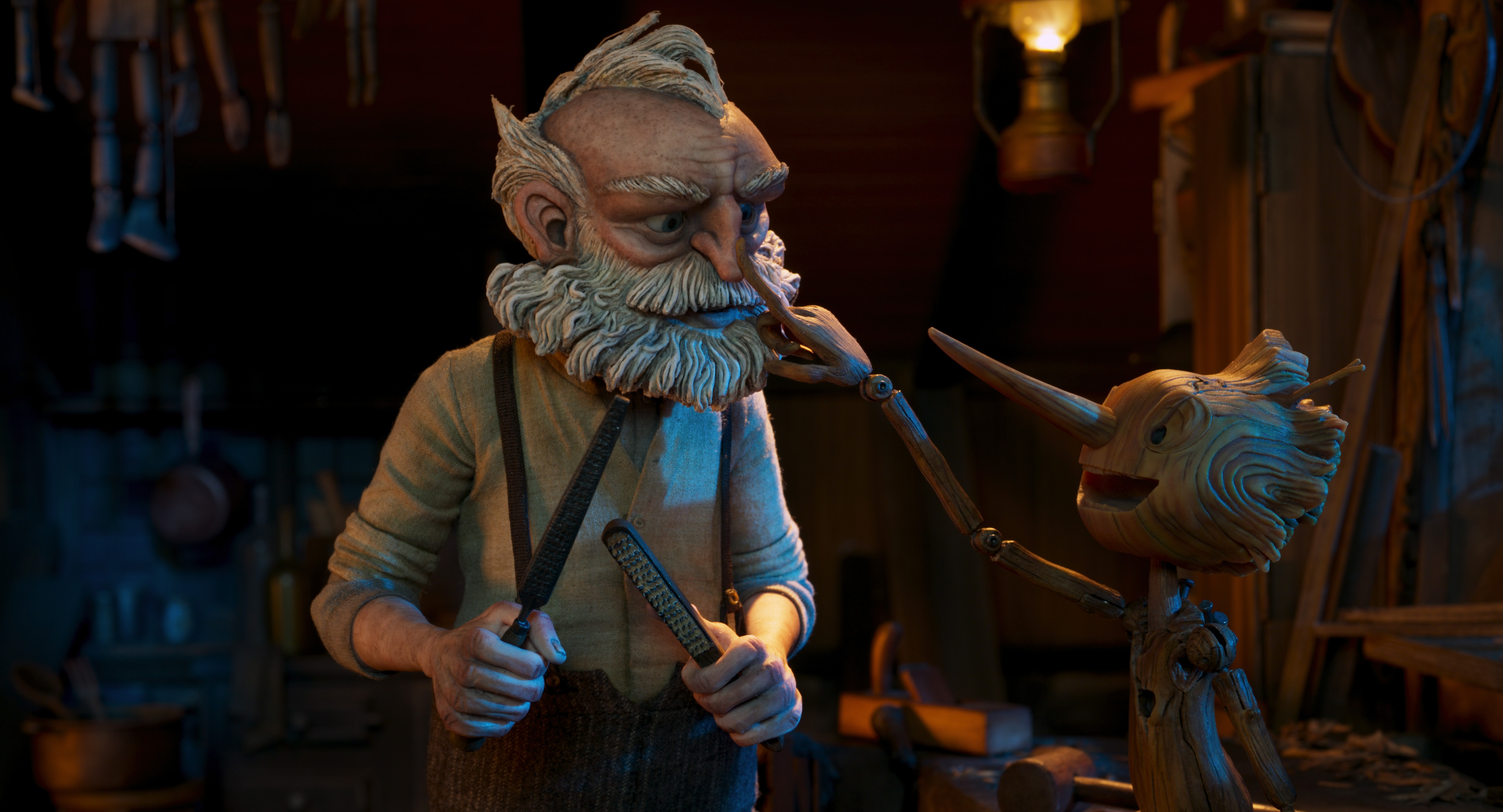Guillermo del Toro’s Pinocchio is a wonder of animation and an exceptional achievement of storytelling in general.
I know what you’re thinking: Didn’t we JUST get another Pinocchio? Well, yes, Disney’s live-action version of its animated classic was released not too long ago. But del Toro’s new film demands attention on its own merits.
Italian author Carlo Collodi wrote The Adventures of Pinocchio in the 1880s, and the story has been filmed many times. The Disney animated film is only the most famous adaptation. Despite how iconic that 2-D production is, del Toro and his team are after an entirely unique look and feel. And they succeed.
Stop motion provides the distinctive medium they need, while inspired story changes emphasize what has always been great about this narrative. The wooden puppet who wants to become a real boy has never looked like this before, in a thrilling way. That’s what happens when a strong vision guides the way, as it does in Guillermo del Toro’s Pinocchio.

“All good things require patience.”
Guillermo del Toro is one of those filmmakers with such a singular approach to visuals that their work stands out as theirs. You know the feeling you get when you watch something they crafted. No one else could do exactly the same thing as them. Let’s call these filmmakers “dream-makers” instead. Del Toro’s trademark as a dream-maker is a touch of darkness. Something will be sad or more often a bit scary, usually overtly but not always.
This meshes very well with Pinocchio’s journey. Just like the live-action Disney version, Geppetto’s motivation for creating Pinocchio here is the loss of a son. (His name is Carlo in this film, a nod to the author.) The man’s despair is tough to witness. Del Toro and his co-director Mark Gustafson take their time with the scenes between father and son so that when the boy’s death happens, it is both affecting and effective. The setting has been moved into the 20th century, so Geppetto loses his son in World War I and is still grieving by the time fascism arises in Italy in the 1930s.
It’s at this time that he builds Pinocchio from a pine tree that grew from a pinecone his son collected. This sequence is definitely inspired by classic monster movies, especially Frankenstein. This was a brilliant choice, and it makes total thematic sense. Both stories are about an inanimate creation getting life but with totally different tones and outcomes.

“When one life is lost another must grow.”
The script gets more right than that, too. The emotions haven’t been forgotten for the darkness. Del Toro and his co-writer Patrick McHale add a layer to Pinocchio’s adventures in that they show that he can die but doesn’t stay dead because he is not real. This lends indescribably emotional heft to the story’s climax. When Pinocchio offers to become mortal to save Geppetto, you really feel the danger he is putting himself in. You really wince at the pain Geppetto feels that he might lose another son. And you really rejoice when the Blue Fairy works her magic again.
And that’s not the end of Pinocchio’s tale. Del Toro and the rest of his team double down on the feels by adding an epilogue. Pinocchio may be mortal now, but he is still made of wood — so he doesn’t age. Geppetto, Sebastian J. Cricket (who wants to bet that J stands for Jiminy?), and the rest of Pinocchio’s loved ones do. You can probably figure out what that means. I can’t express enough how well del Toro and the rest of his team adapted the tale we’re all familiar with and gave it fresh emotional resonance.
Plus, the stop-motion animation is wonderful! The intricacy of the work required to make certain sequences especially is astounding. The visual design overall is remarkable, but then things like camera use take it to an even higher level.
Del Toro has also assembled an impressive voice cast, with even the smaller roles filled with recognizable names. Joining David Bradley as Geppetto, for example, are Ewan McGregor as the Cricket, and even Ron Perlman, Cate Blanchett, and Tilda Swinton in supporting roles. They fit right into the wondrous, beautiful viewing experience of Guillermo del Toro’s Pinocchio.
5 stars out of 5
Guillermo del Toro’s Pinocchio is now streaming on Netflix.

